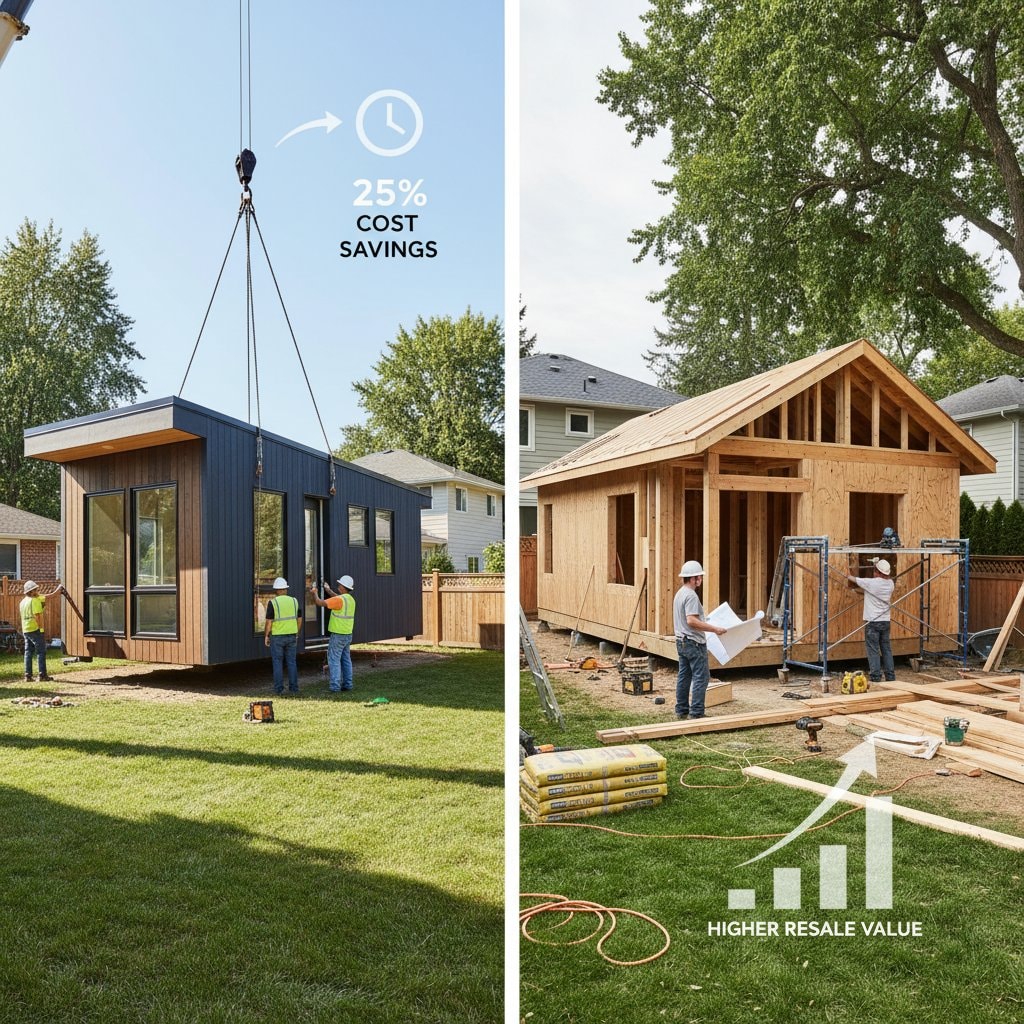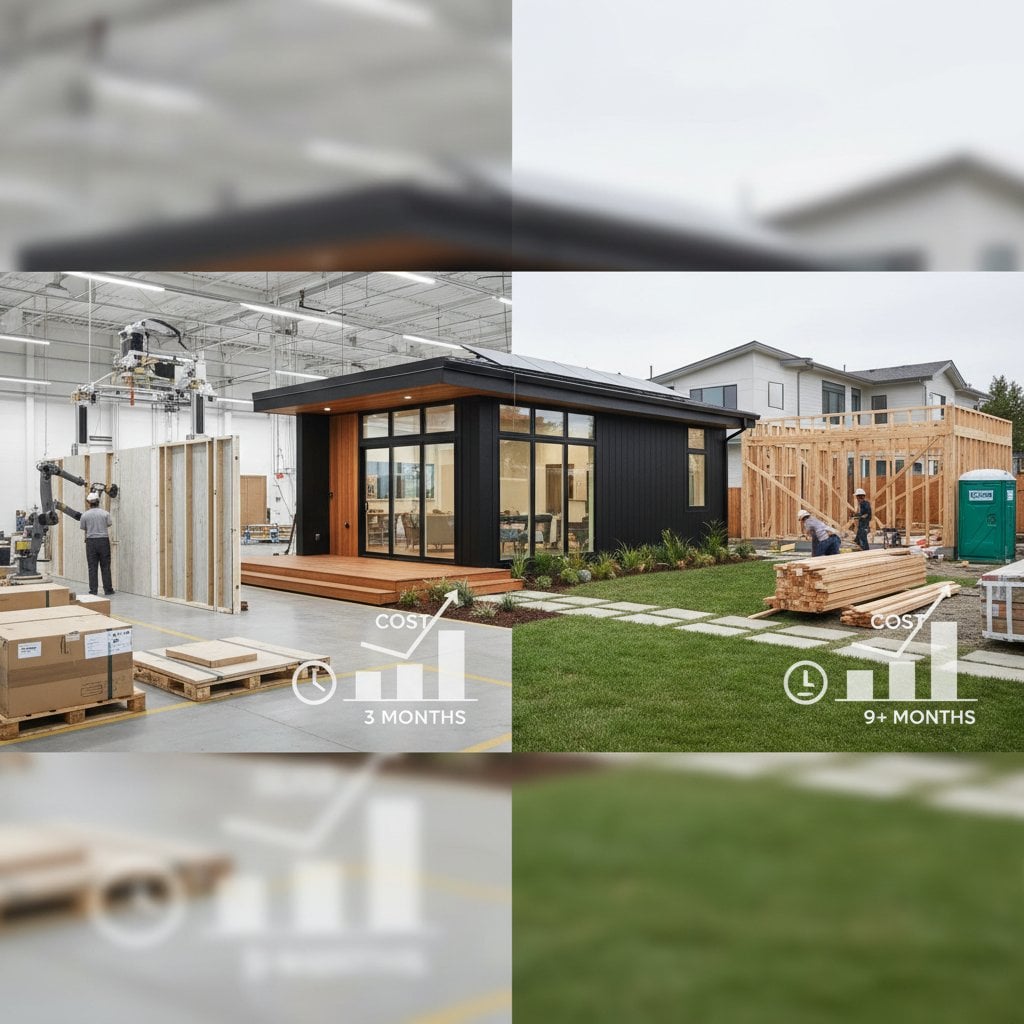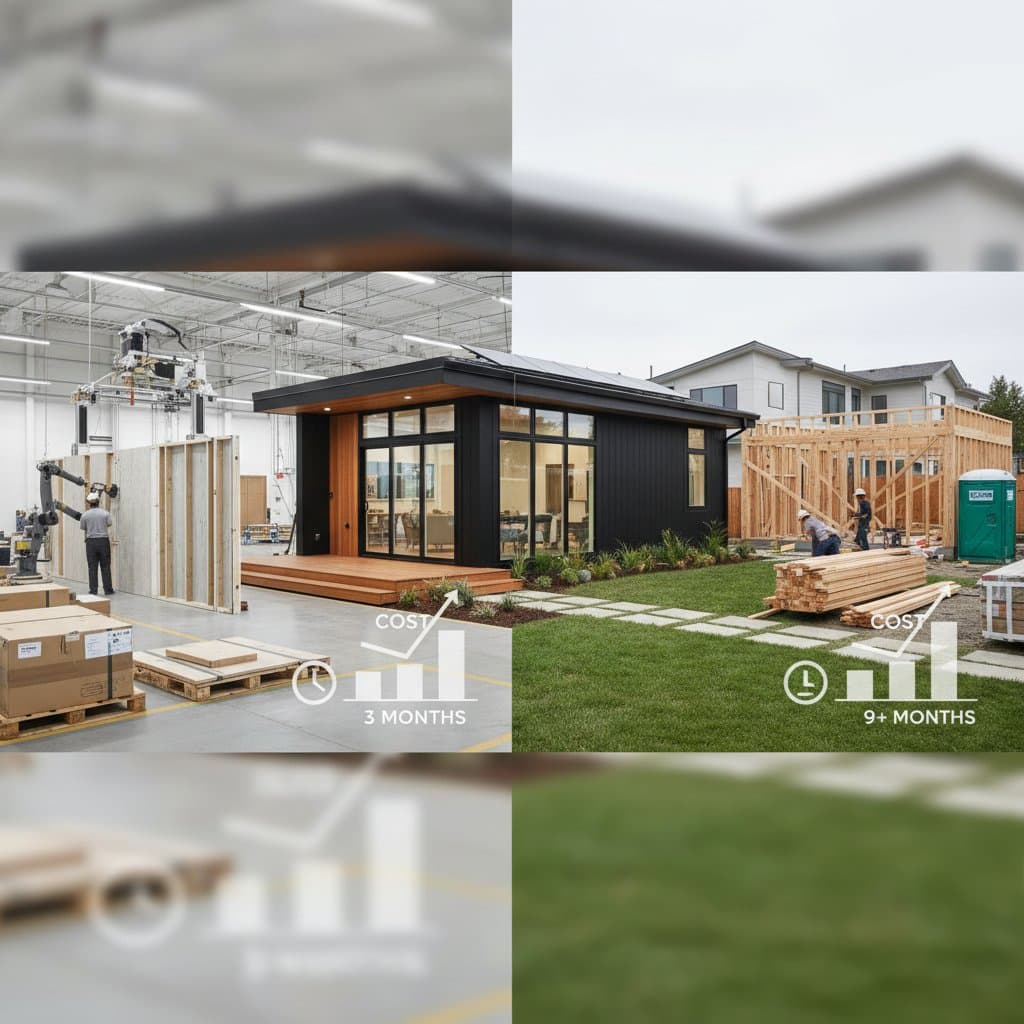Prefab vs. Site-Built ADUs: Cost Savings in 2025
Accessory Dwelling Units (ADUs) offer homeowners additional living space or rental income opportunities. When evaluating prefab and site-built ADUs, individuals must consider variations in expenses, construction durations, and personalization options. Each method boosts property worth, yet prefab approaches often provide superior initial savings.
Cost Overview
Prefab ADUs range from $180,000 to $360,000, averaging $250,000 for a complete installation. Site-built ADUs cost between $250,000 and $480,000, with an average of $340,000. These figures account for full projects in moderate climates, excluding extreme site challenges.
Savings arise from prefab efficiencies in labor and timelines, while site-built units allow greater adaptation to existing structures. Primary influences on pricing include unit dimensions, foundation requirements, interior selections, and regional regulations. For a 600-square-foot unit, prefab installation might total $240,000, compared to $300,000 for site-built equivalents.
Key Advantages and Trade-Offs
- Prefab ADUs achieve 15% to 25% cost reductions relative to comparable site-built models.
- Site-built ADUs enhance resale prices through custom alignments with primary residences.
- Factory-based prefab labor minimizes on-site disruptions and overhead.
- Shared elements like permits and utilities can diminish overall differences.
- Prefab timelines span 2 to 4 months; site-built projects extend to 6 to 12 months.
Contractor Involvement: Professional and DIY Considerations
Professional contractors handle most ADU developments, though responsibilities vary by method.
Installing Prefab ADUs
General contractors manage foundation work, site grading, and utility integrations for prefab units. On-site labor comprises 20% to 30% of expenses, as factories complete the bulk of assembly. This setup reduces coordination among trades and limits exposure to site variables like rain delays.
Building Site-Built ADUs
Site-built projects necessitate comprehensive oversight, covering framing, roofing, electrical systems, and compliance checks. Labor constitutes 40% to 50% of the budget, with potential overruns from supply chain issues or scheduling conflicts. Experienced teams mitigate these risks through detailed timelines and contingency planning.
DIY Feasibility
Fully independent ADU construction proves challenging due to code-mandated expertise in structural, plumbing, and electrical domains. Homeowners might contribute to non-technical phases, such as interior painting or exterior landscaping, to trim minor costs. Professionals remain vital for safety and approval processes in both prefab and site-built scenarios.
Strategies for Cost Reduction
Effective budgeting starts with pre-construction decisions that preserve structural integrity.
- Opt for modest sizes, like 400 to 800 square feet, to lower material demands and simplify installations.
- Select basic appliances and countertops, which maintain functionality while cutting 10% to 15% from finishes.
- Position the ADU near primary utilities to avoid extensive excavation and piping expenses.
- Solicit bids from at least three prefab providers, noting variations in warranties and delivery inclusions.
- Assess access routes in advance to control equipment rental fees for prefab transport.
- Submit all permits simultaneously to streamline reviews and avoid repeated fees.
Data Sources for Cost Estimates
These projections draw from aggregated contractor bids, manufacturer catalogs, and owner experiences in diverse U.S. markets. Estimates cover end-to-end processes, from initial designs to final inspections. Local factors, such as soil conditions or zoning variances, may adjust totals by 10% to 20%.
Durability and Construction Quality
Factory environments shield prefab materials from elements, ensuring precise joins and pre-shipment verifications. Advanced techniques yield insulation levels matching Energy Star ratings, with durable exteriors like fiber cement siding. Such consistency supports longevity comparable to custom builds.
Site-built ADUs depend on field expertise, where supervisors enforce standards amid variable conditions. This method permits premium choices, such as impact-resistant windows or custom millwork, though oversight lapses can affect outcomes. Both formats adhere to uniform codes when contractors follow protocols.
Ongoing Maintenance Requirements
Post-installation upkeep aligns closely between prefab and site-built ADUs, involving routine tasks like gutter cleaning and HVAC servicing. Annual costs average $1,000 to $2,000, influenced by location and usage. Prefab components may require vendor-specific parts, whereas site-built ones utilize widely available supplies.
Warranties provide essential protections: prefab offers 10- to 20-year structural guarantees, while site-built terms hinge on builder contracts. Examine coverage scopes, including exclusions for modifications, to anticipate repair funding.
Selecting and Implementing Your ADU
Priorities dictate the ideal path: prefab suits budget-conscious timelines with reliable outcomes, while site-built excels in tailored aesthetics. Obtain detailed proposals outlining scopes, from foundation specs to finish schedules. Verify inclusions for compliance and post-completion support.
Thorough research transforms ADU additions into assets that elevate living standards and financial returns. Both options, when planned meticulously, deliver enduring utility and adaptability to evolving needs.










